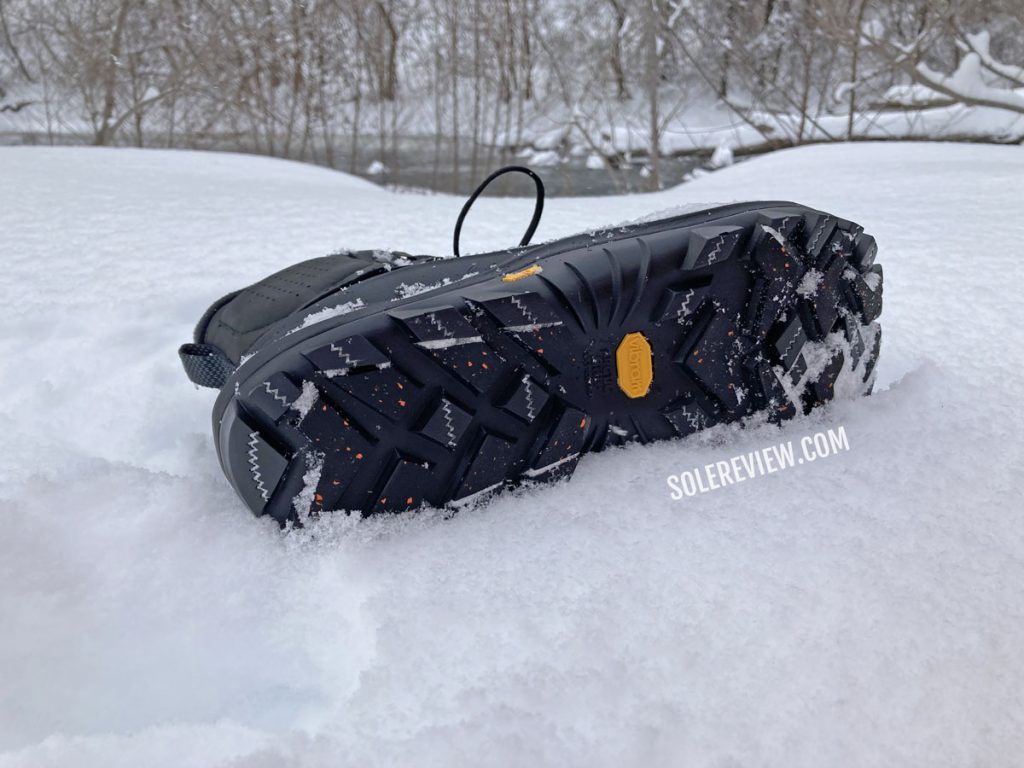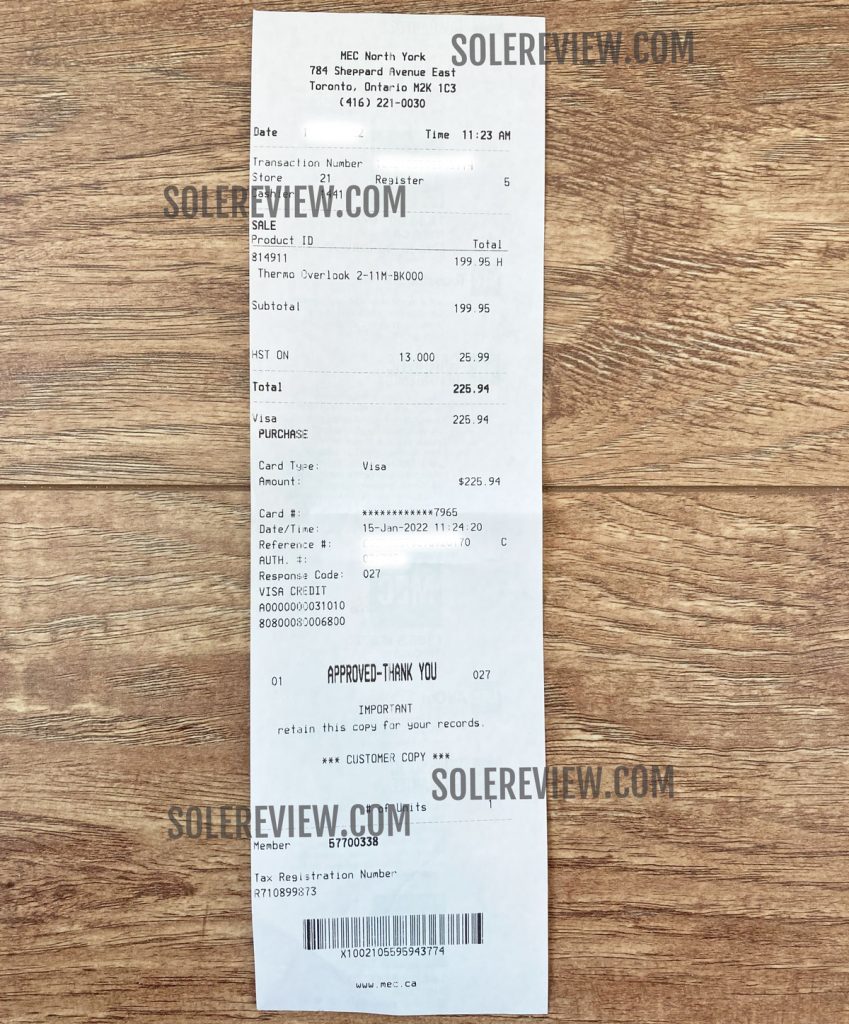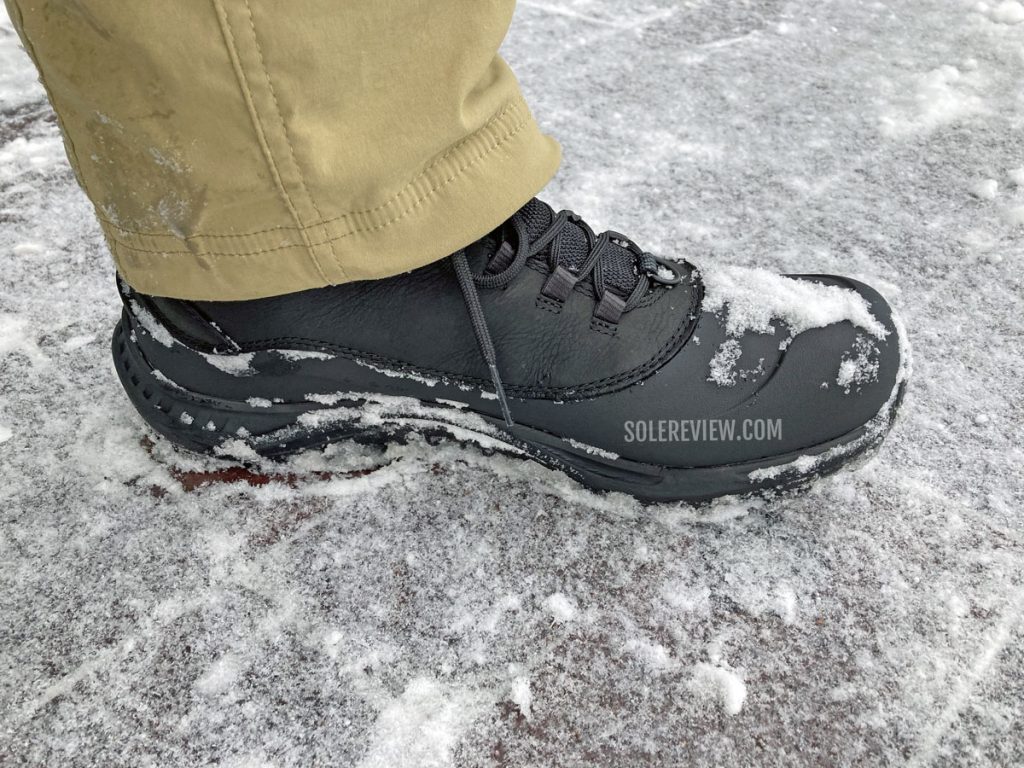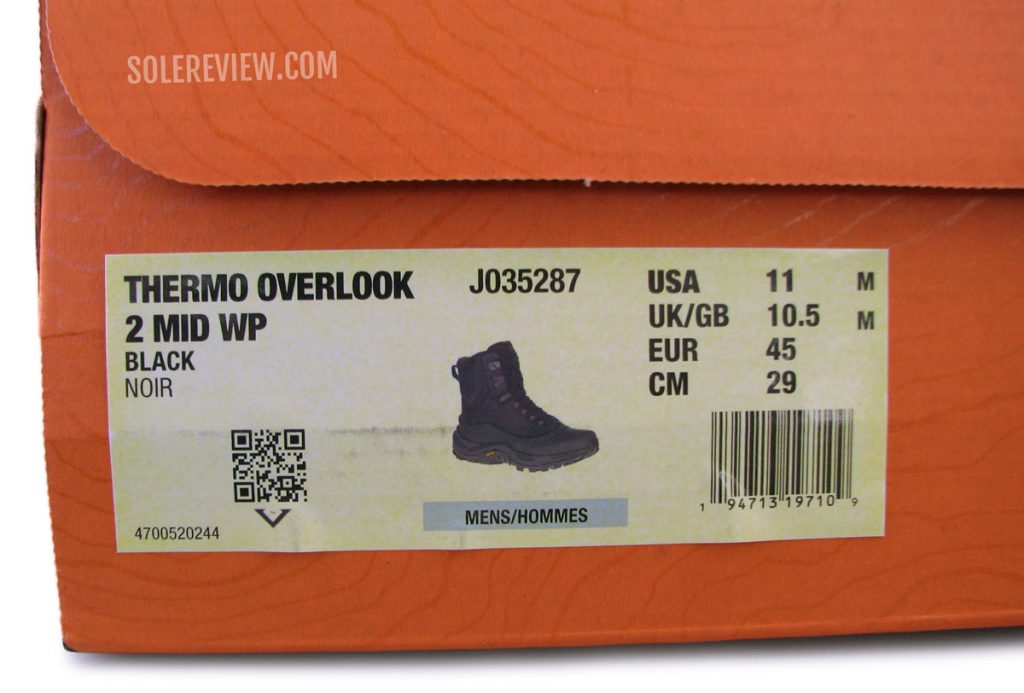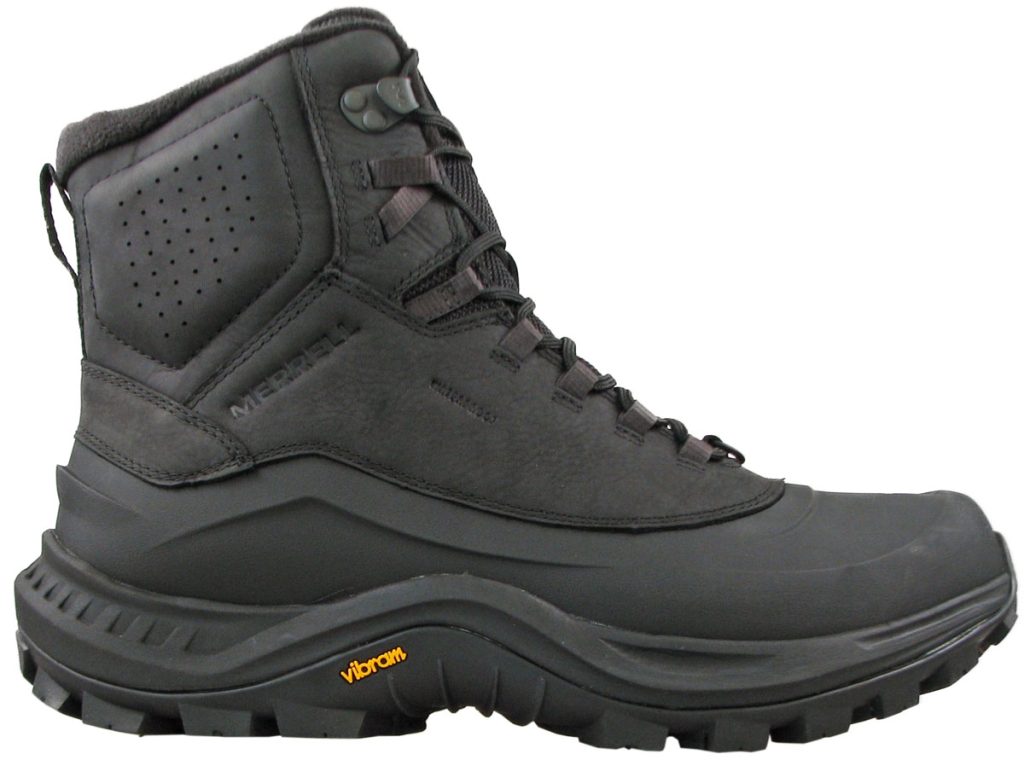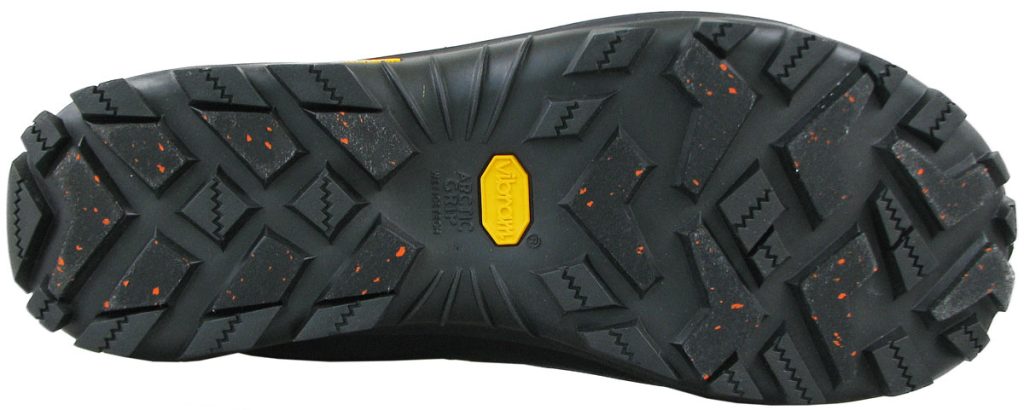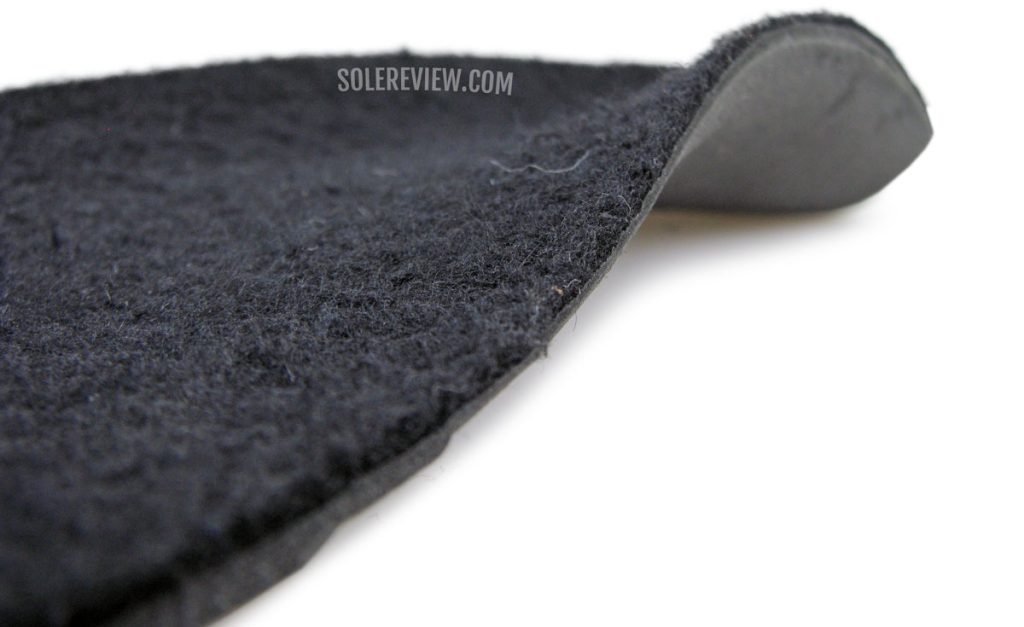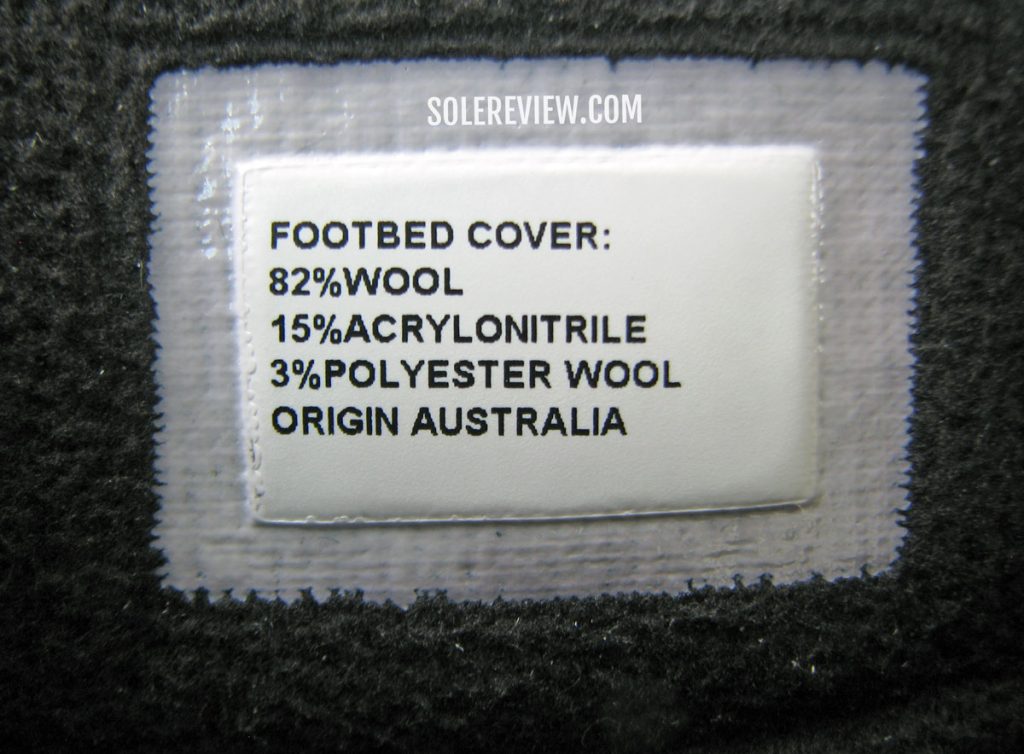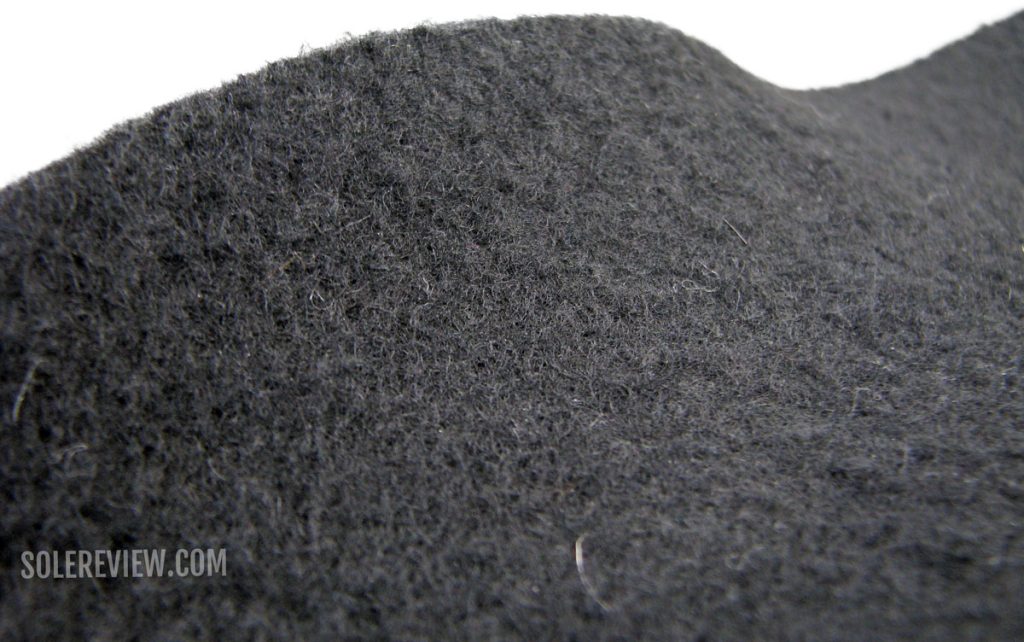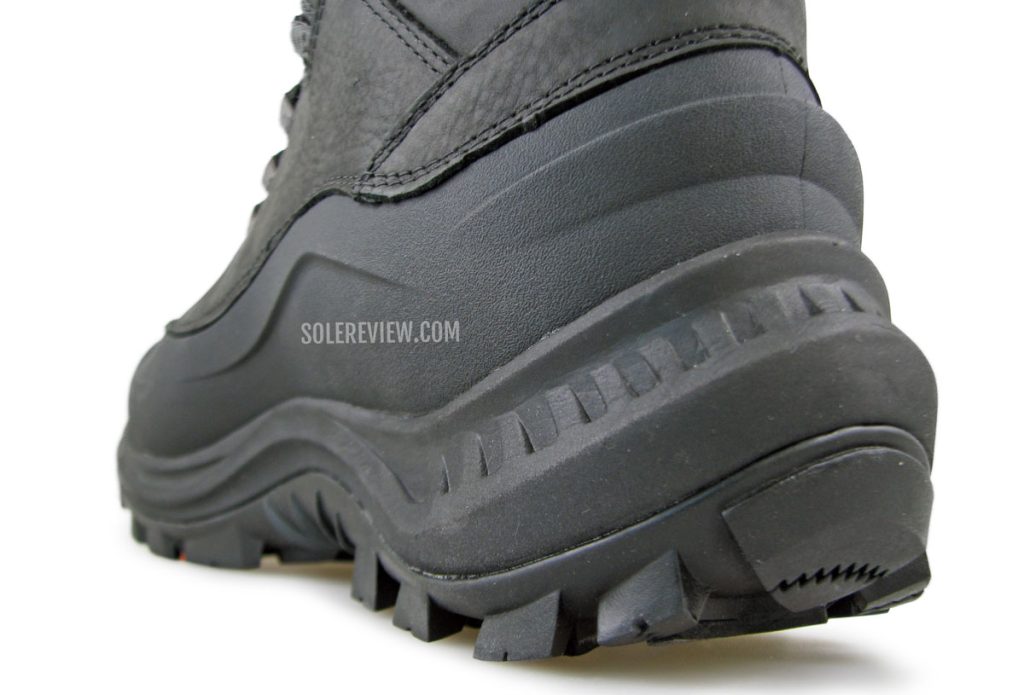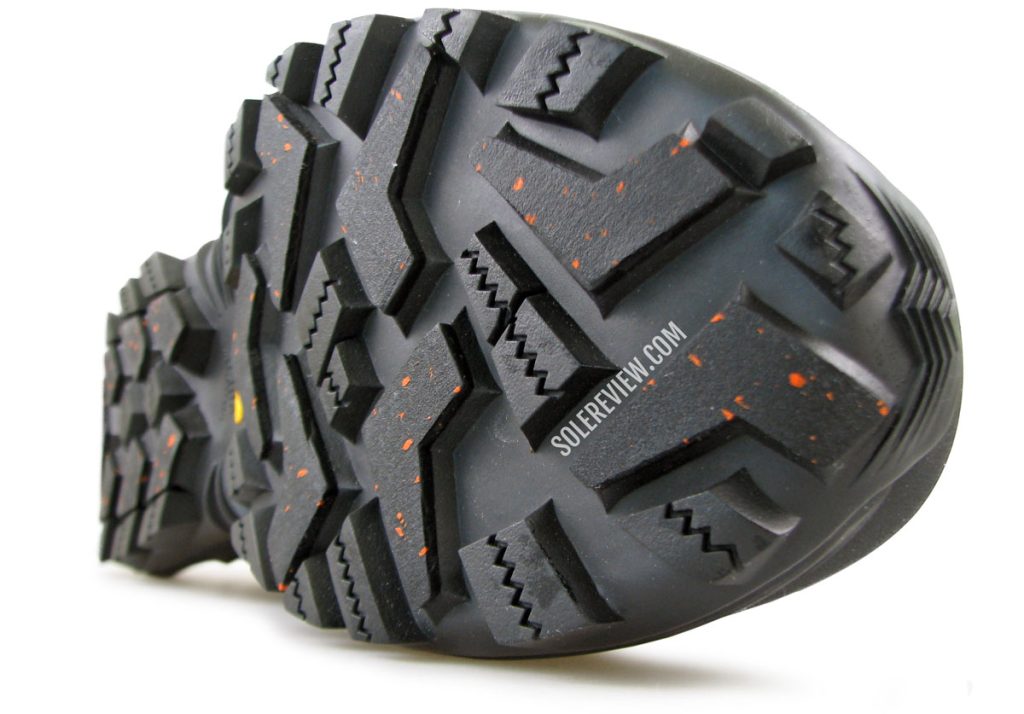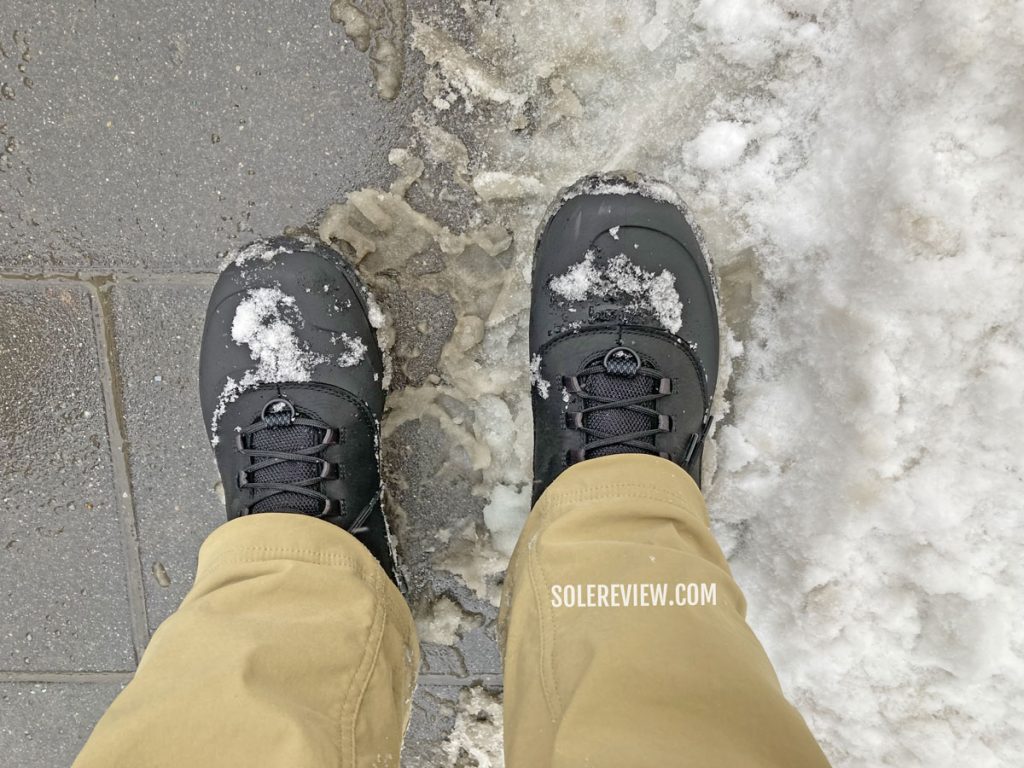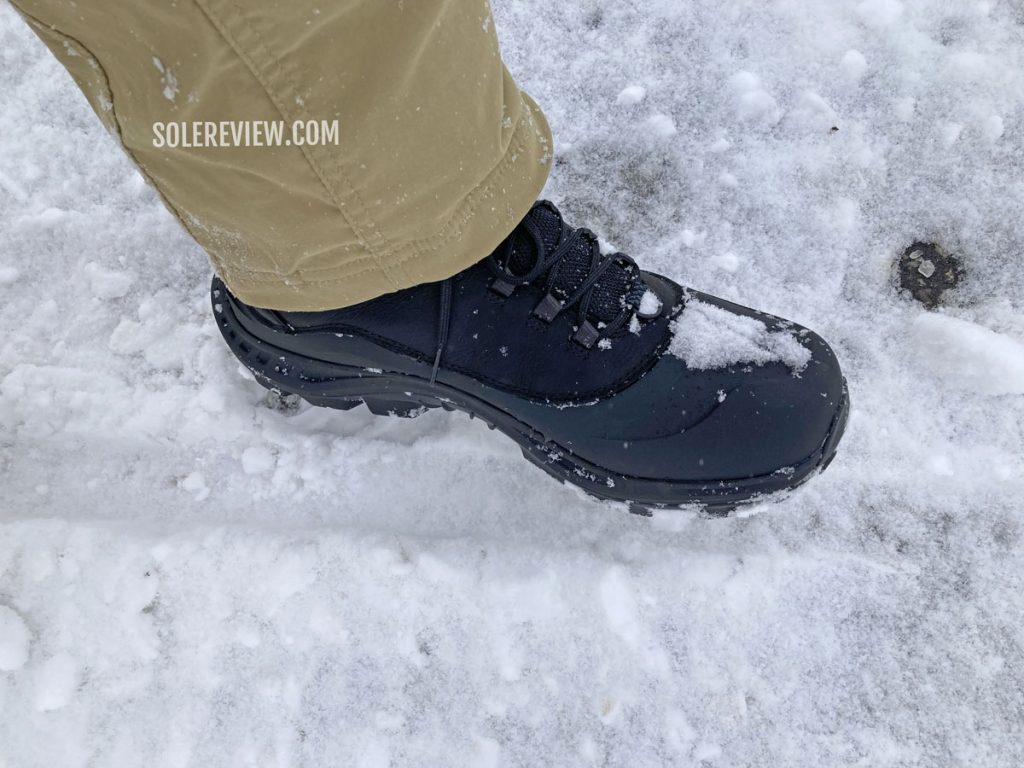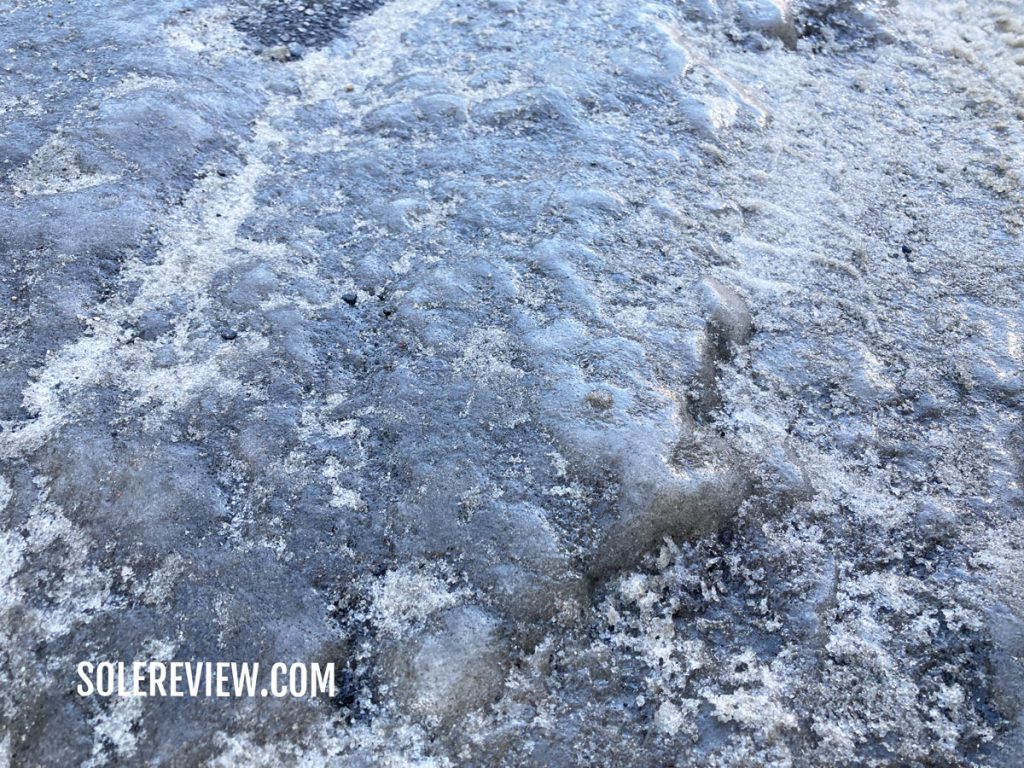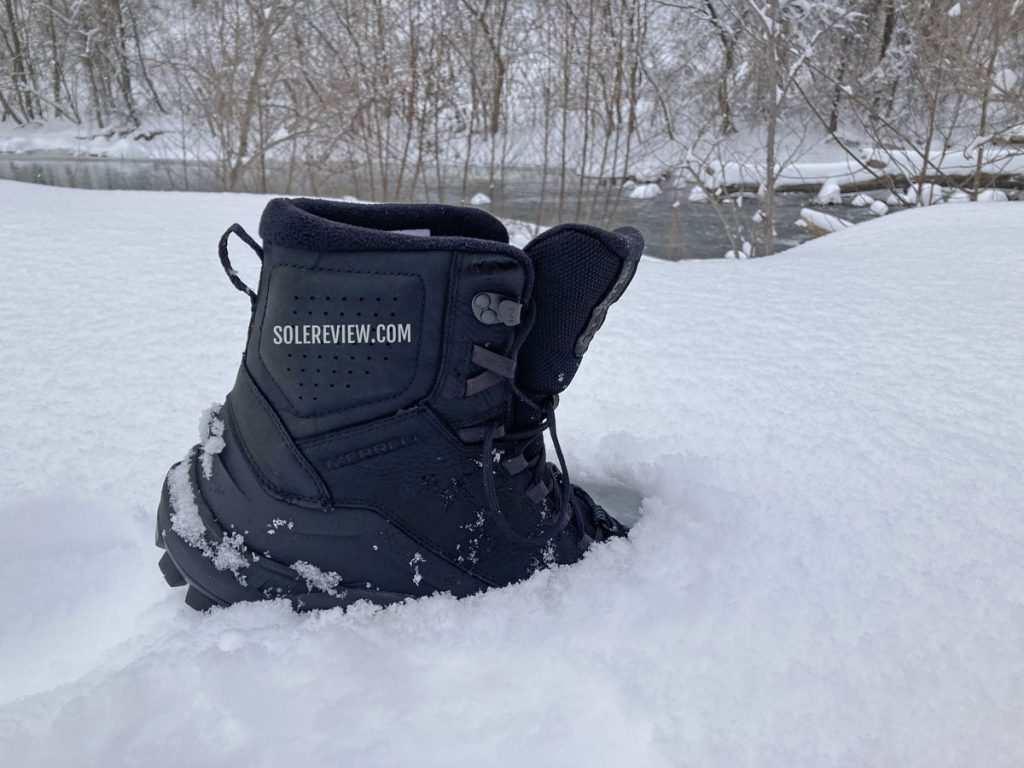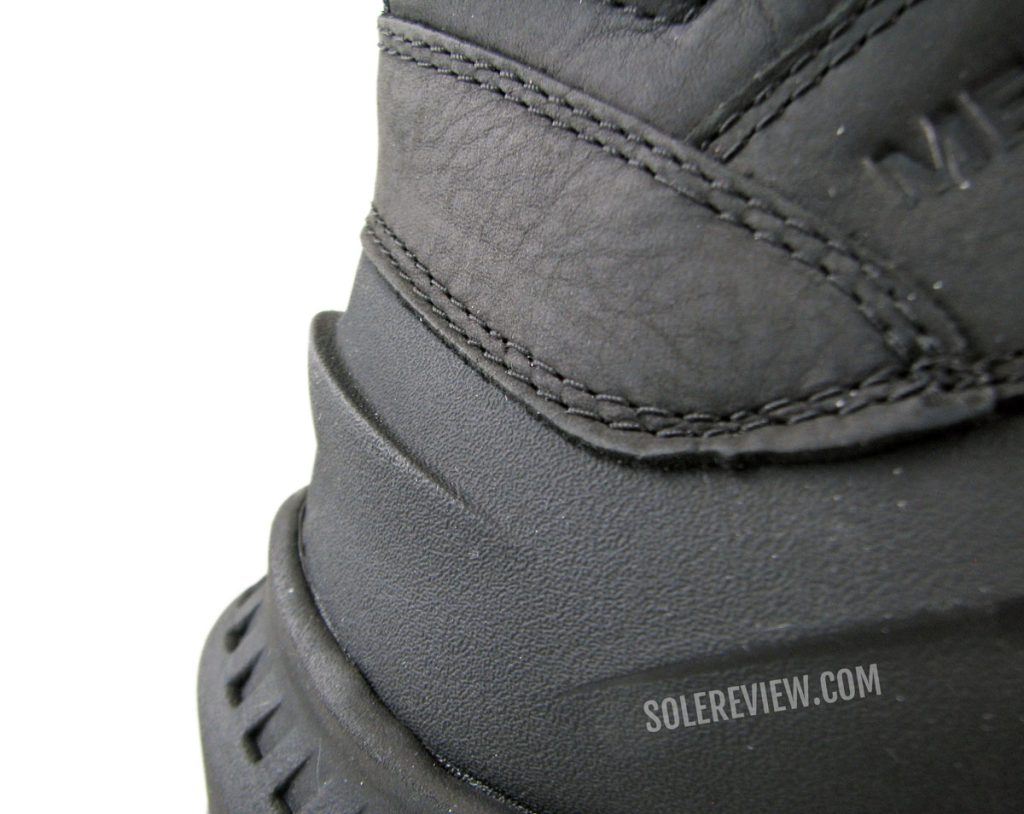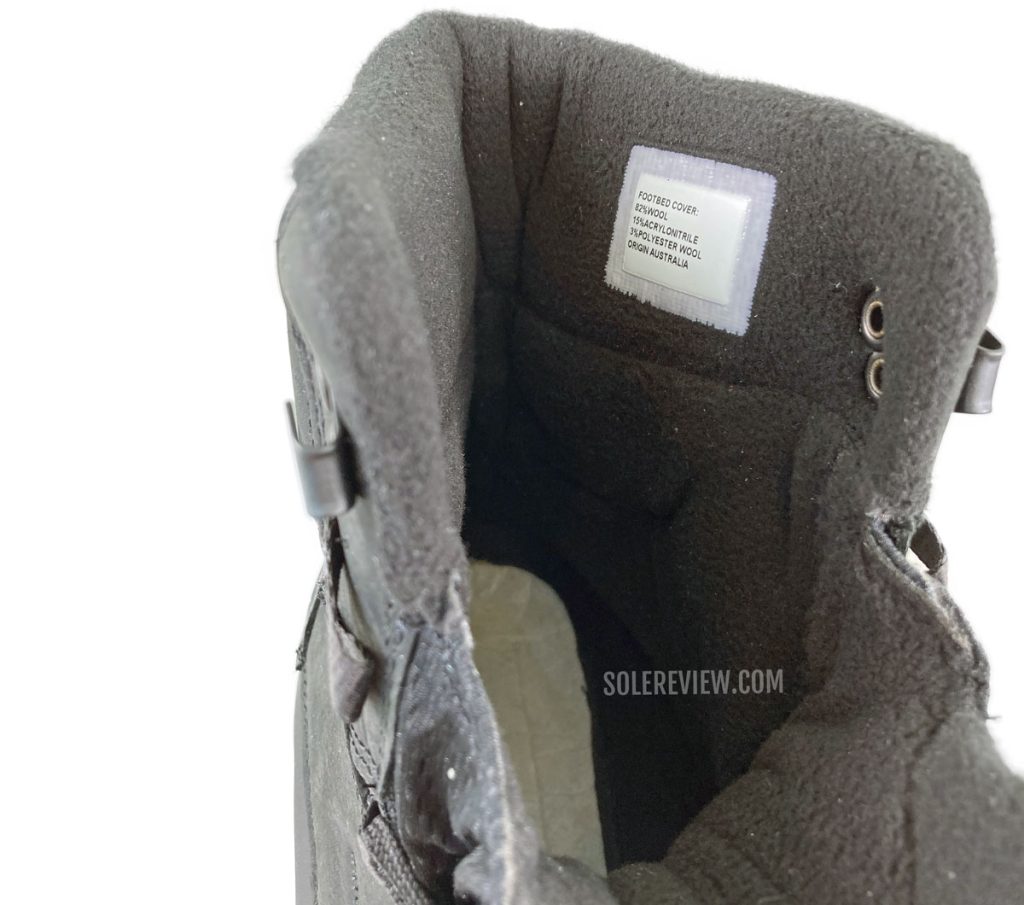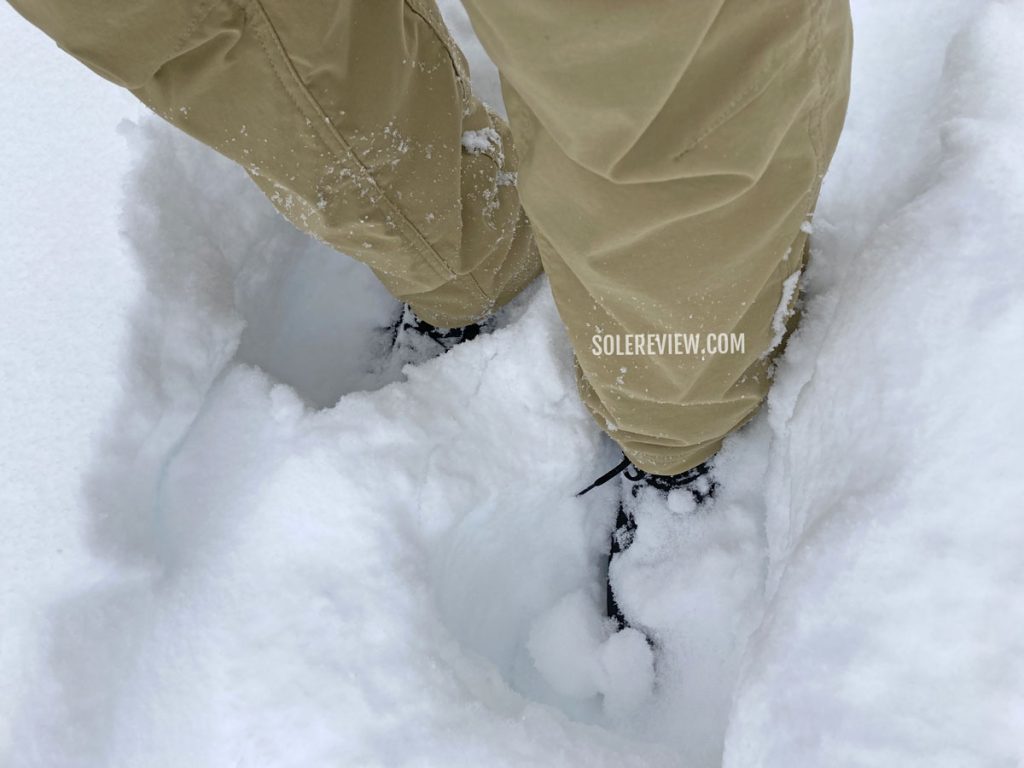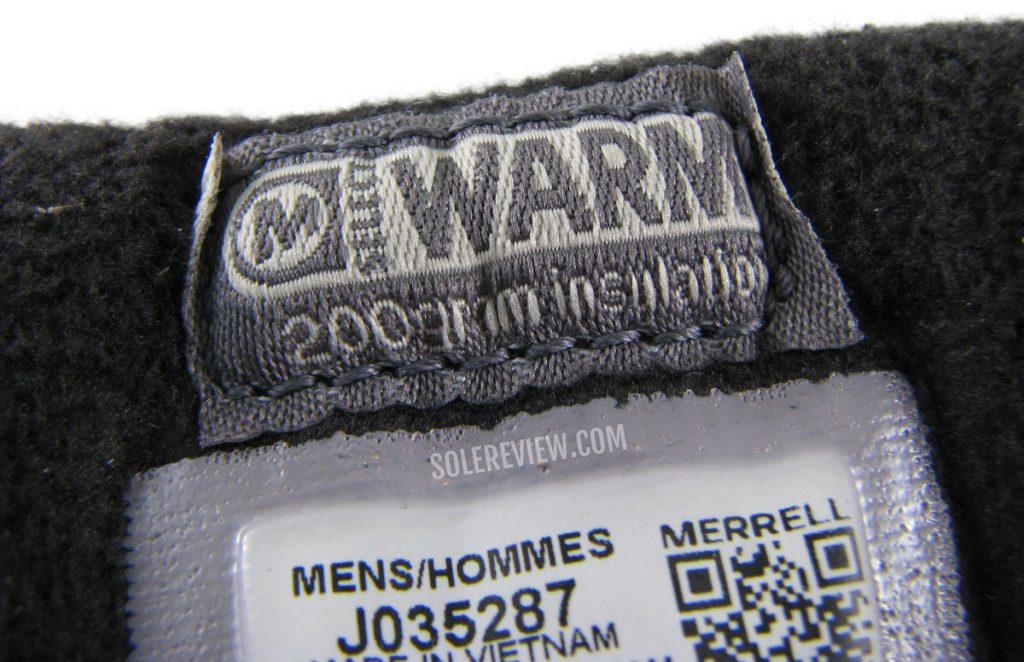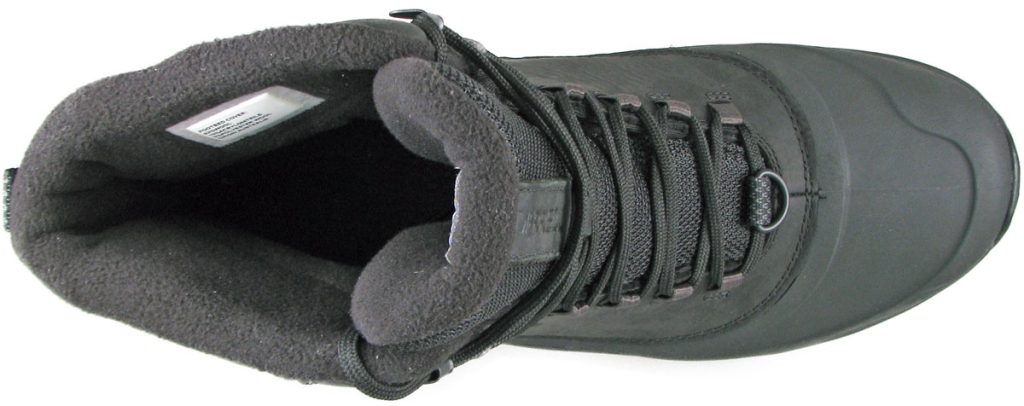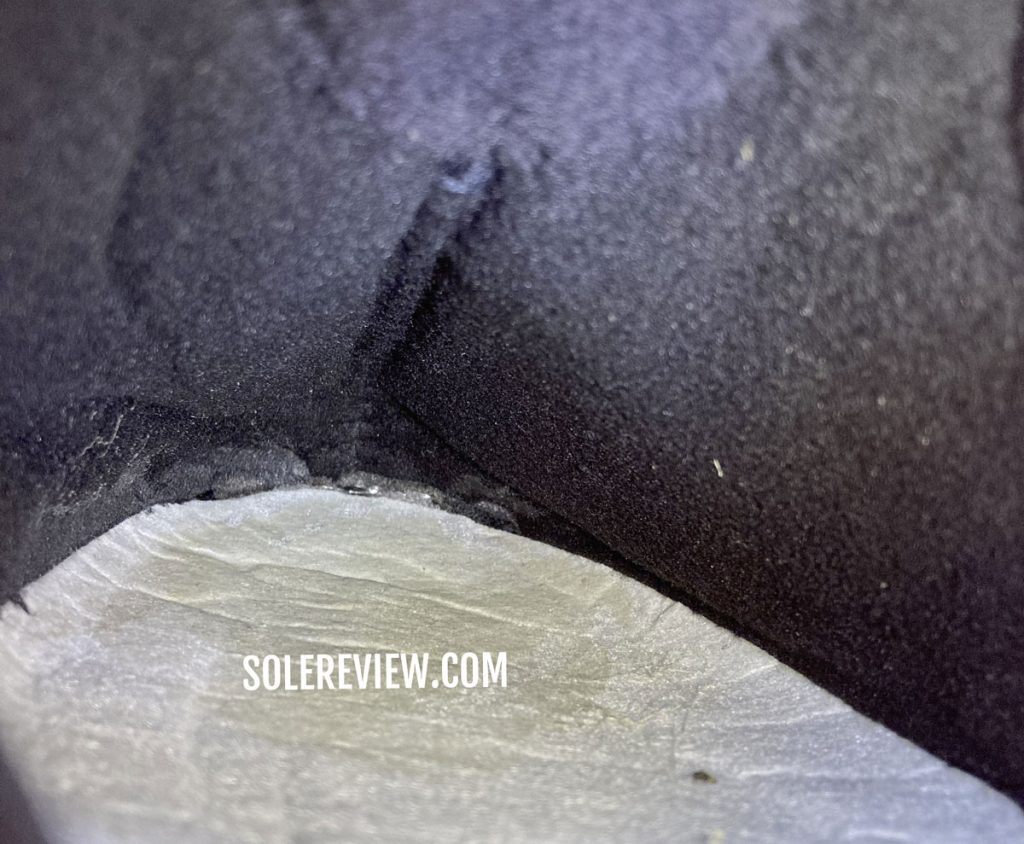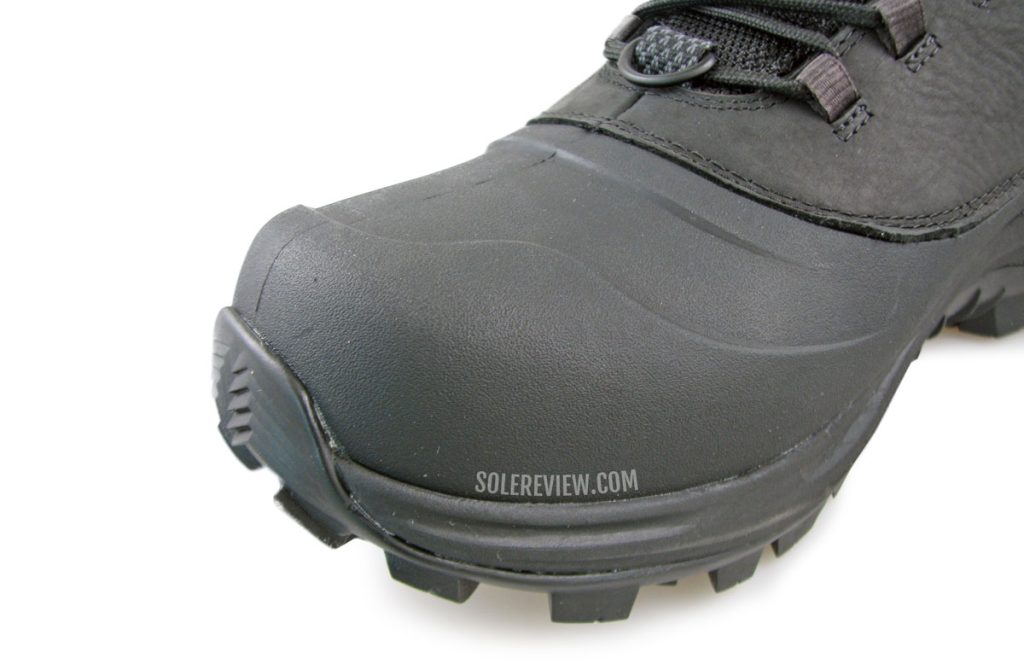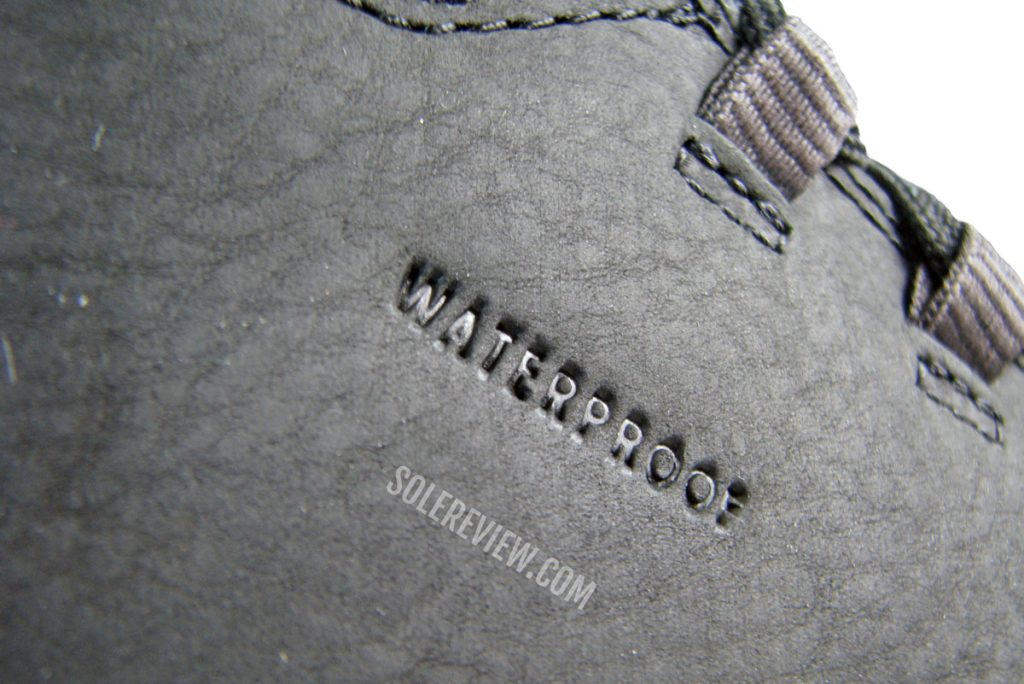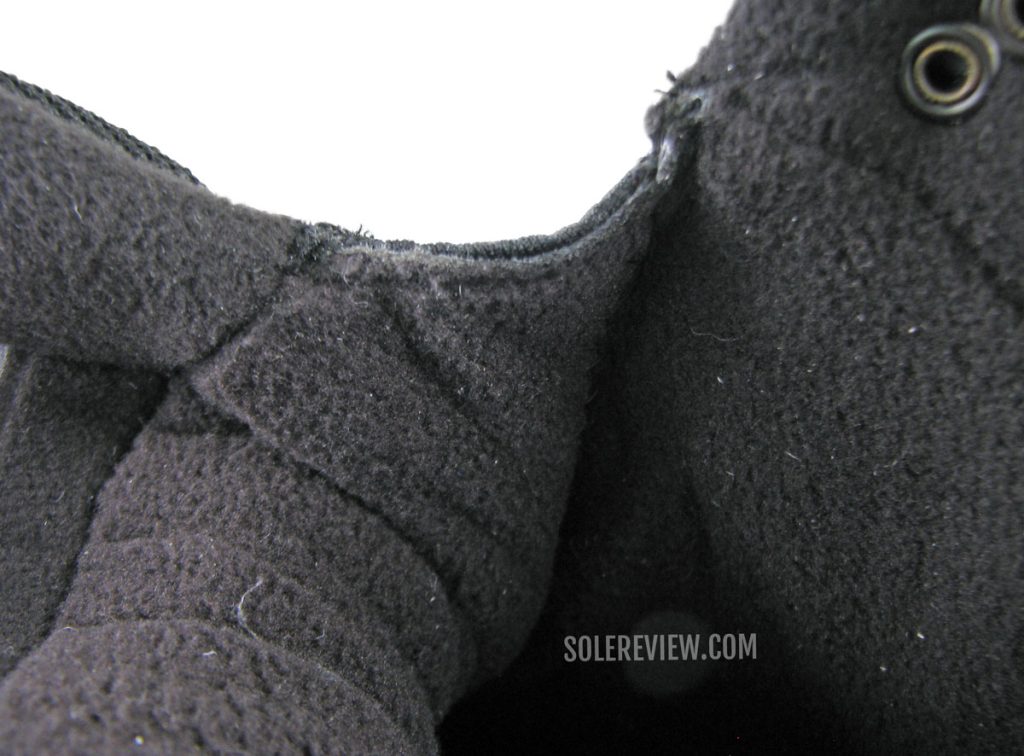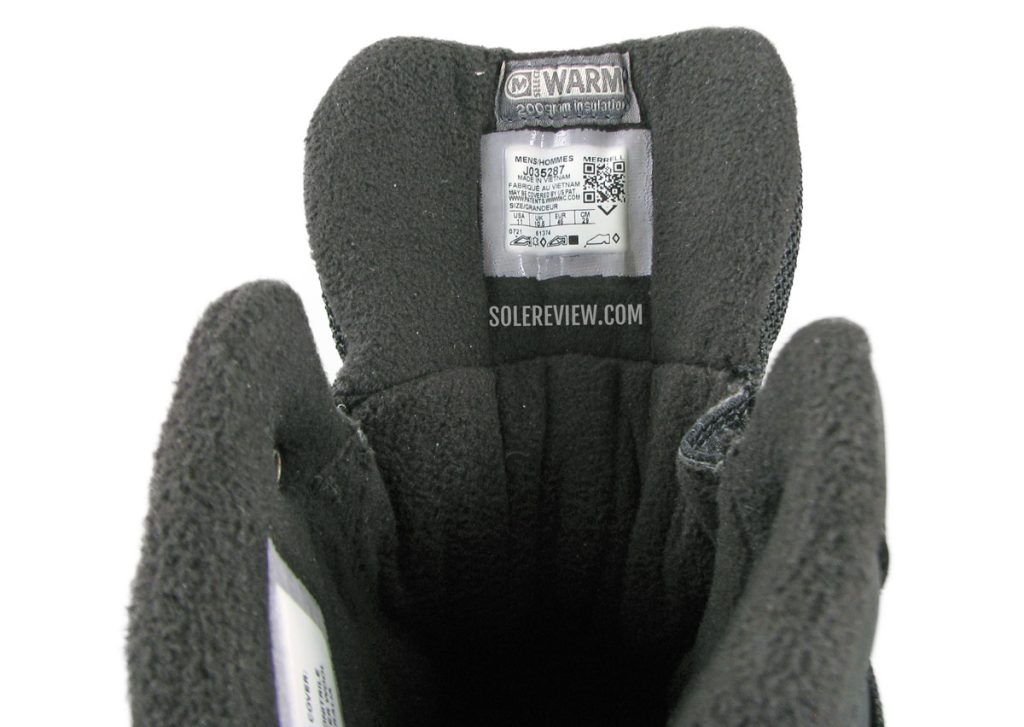The Merrell Thermo Overlook 2 was purchased at full retail price for our review. The amount is in Canadian Dollars.
INTRODUCTION
This isn’t our first review of a Merrell shoe; that honor goes to an amphibious sandal called Merrell Hydro.
We reviewed the Hydro in July 2008, which also happened to be Solereview’s first year of existence. It was a cleverly-designed sandal with neat features like a Vibram outsole that had hidden grooves for traction.
After 14 years, it’s time for another Merrell review – that of the Thermo Overlook 2 mid.
Merrell has always been consistent from a branding and product perspective. It has never strayed from its outdoor-focused product strategy, and in the process, has built a loyal following of active consumers.
It even had a successful run during the barefoot running footwear boom. It wasn’t long ago that shoes like the Merrell Trail Glove, Vapor Glove, and Bare Access were a hot commodity.
It’s worth noting that Merrell is a part of Wolverine Worldwide group, a company that also owns Saucony, Keds, Hush Puppies, and Sperry – along with several other brands. Wolverine Worldwide is like a VF Corporation of sorts; the latter owns Altra, Vans, and North Face.
After spending a few weeks in the Thermo Overlook 2 boot, we’re happy to report that Merrell’s product quality hasn’t changed.
This $160 mid-cut boot with a 200-gram fill offers excellent value for money. It’s very comfortable, waterproof, reasonably warm, and uses quality materials without cutting corners.
It’s also superior to comparable mid-ankle winter boots like the Keen Revel IV and North Face Chillkat IV (not to be confused with the Chillkat 400).
The Vibram Arctic Ice grip outsole is the only feature that we don’t have a favorable opinion of. However, this is not a Merrell-specific feedback, but applies to any shoe or brand that claims to offer superior ice traction by using non-cleated outsoles.
(Related read: The best shoes for walking on ice)
THE RIDE EXPERIENCE
Two aspects of the ride character become immediately noticeable, even after a short hike. The first is the high level of under-arch support. There’s a distinct sense of the insole cupping the arch, to an extent that some wearers may even find intrusive.
The insole design plays a role here, as does the shape of the midsole. Here’s what the insole looks like; the EVA frame is molded to cup the arch. The slim waist of the midsole also helps support the arch.
The insulating insole is a removable kind with a wool footbed and EVA foam base. Expect the insole to shed a lot of fibers in the early days of ownership. The label inside the upper points at the insole’s Australian origins; we assume that Merino wool is involved in the making of the footbed.
If you wear a pair of white socks with the Overlook 2, don’t be startled to see the dark yarns sticking to its underside. On the bright side, the wool layer adds much-needed interior warmth, insulation, and a layer of step-in softness.
The lack of a heel counter is the second oddity that quickly becomes apparent. Since this section focuses on the ride quality, we’ll discuss the heel fit in the next part of the review.
The rest of the midsole is very comfortable and stable. The EVA midsole is supportive and sufficiently cushioned for day hikes; the ride comfort never felt lacking even after a 7-hour winter hike through snow and uneven terrain. The foam midsole also has a Nylon arch shank concealed within.
The midsole and insole stack is also an effective barrier against the cold, so the foot is adequately insulated from the frozen ground. The coldest we’ve tested the Overlook 2 was -19 C (- 2.2 F), and the feet stayed warm.
To be clear, the insulation only works under active use. The cold seeps inside the shoe when stationary, so getting boot with a higher level of insulation fill (400 grams) is recommended for prolonged non-active use.
We have a dim view of the Vibram Arctic grip outsole. Speaking of its positives, the compound usually grips very well on wet roads. However, that’s an area where most winter outsoles perform well – even without the rough surface texture.
The problem with the Vibram Arctic Grip outsole is that it requires the surface conditions to be almost lab-like.
Vibram claims that the sandpaper-like texture of the specially-formulated lugs provides ‘wet ice’ traction, and preferably a surface that is flat. However, ‘wet ice’ is not what most people encounter during freezing winter days.
This outsole will slip on hardened ice of any kind, and offers no defense against ultra-hard black ice.
The brands that use this outsole – or an in-house variation – advertise the grip as suitable on icy surfaces. That’s not true, and is false advertising. It even fails to grip on wet icy lumps that are often found on the sidewalks.
Sure, the Arctic Grip outsole grips much better than a summer shoe outsole, but that’s beside the point.
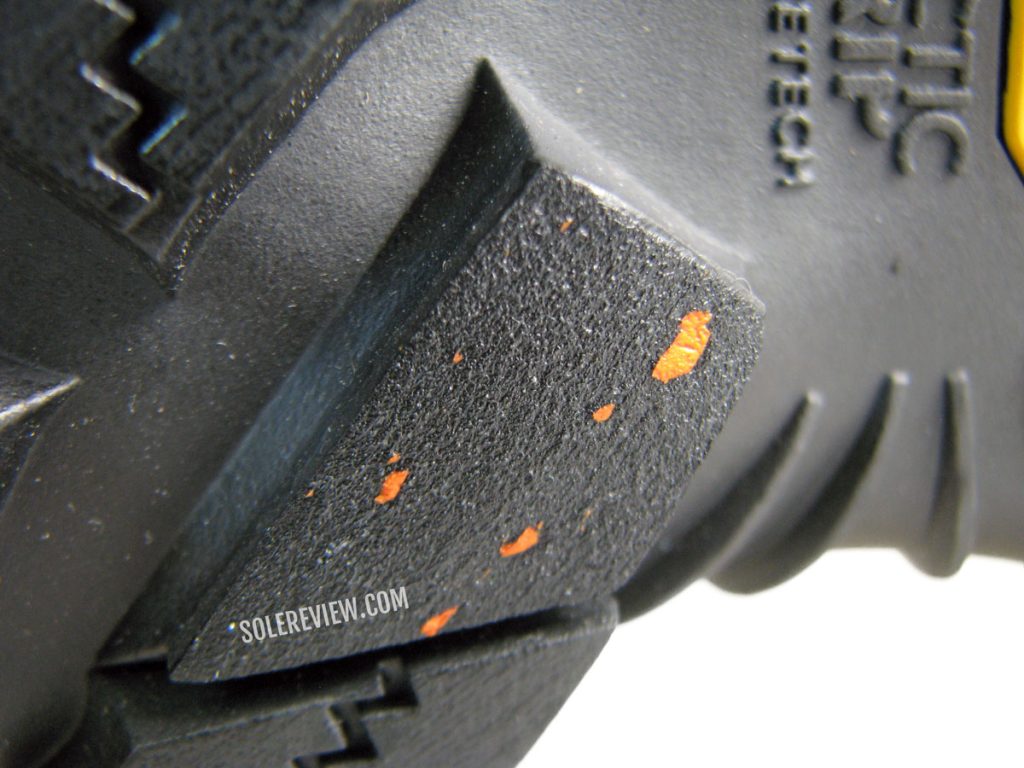
In theory, the rough texture of Vibram Arctic rubber is supposed to grip better on ‘Wet Ice’ – a surface condition that most freezing winters do not have.
In short – the Vibram Arctic Grip outsole does not offer incremental performance benefits on iced-over surfaces. That also applies to similar soles like the Keen Polar Traction and Dr. Marten’s Wintergrip,
On a related note – a few years ago, Merrell had their version of the winter outsole called the ‘M Select Ice.’ The hard rubber crampons claimed to grip icy surfaces, but we have no idea how it compares with the Vibram design.
Anyway – unless you’re wearing a boot with retractable spikes (Pajar with OC system outsoles) or in-built spikes (Icebug or Salomon), walking on ice is dangerous, period.
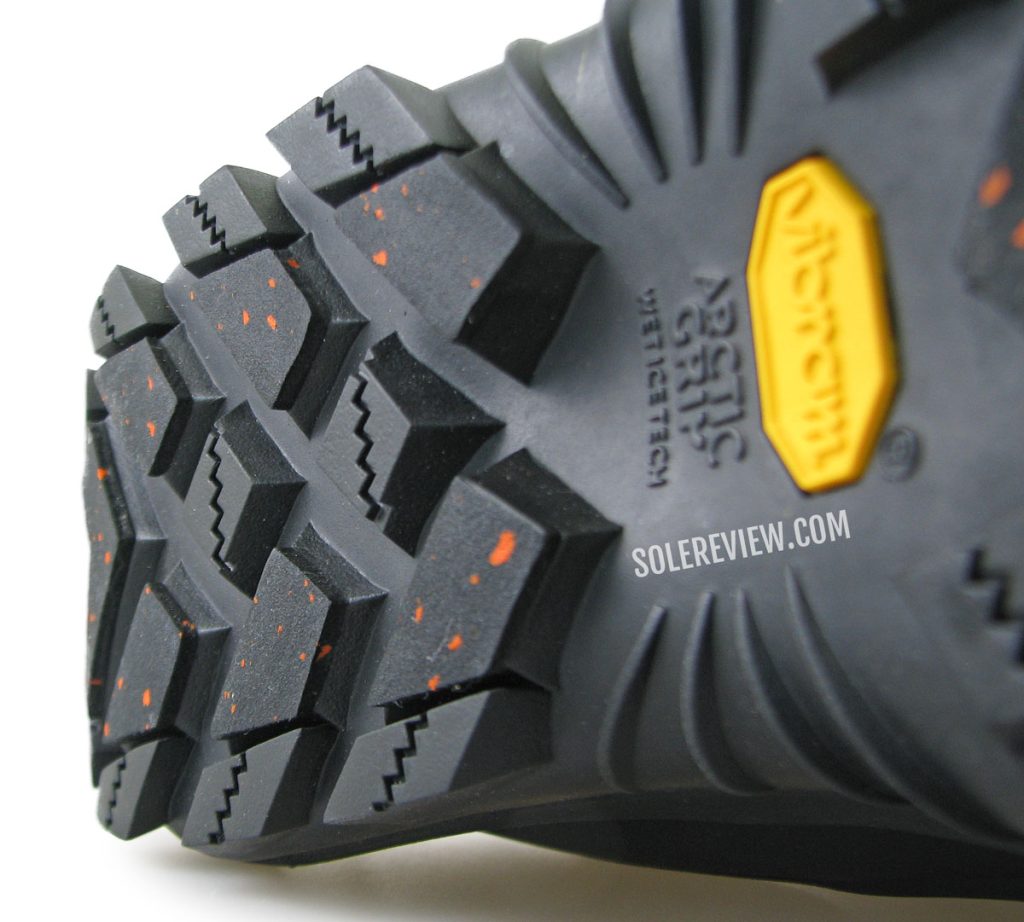
On the bright side, the deep lugs of the Thermo Overlook provide decent grip on wintery (non-ice) surfaces.
If not for icy grounds, the Merrell Overlook 2’s outsole grip is at par with any good winter outsole. The lugs are 5 mm deep and have a healthy area of separation between them, so they dig well into surface slush.
The smoother lugs without the Arctic grip texture have a zig-zag pattern to enhance the traction levels.
For deep powder, a snow shoe becomes necessary to create a larger contact area for trudging through snow.
The midfoot has ample ground clearance to secure a gaiter strap. There are no outsole lugs in that area, and molded ridges prevent the strap from moving during hikes.
THE UPPER DESIGN AND FIT
We made a brief mention of the soft heel fit earlier in this review, and we’d like to expand on it further.
Though the Thermo Overlook 2’s heel is covered with rubber, it’s not rigid like many hiking boots. A stiff internal counter is absent, thus making the heel soft and flexible.
This design leads to mixed outcomes.
On one hand, the soft heel counter greatly reduces the chances of rubbing and irritation.
The pliable construction also makes it easy to wear the boot, as there’s no stiff counter to resist the foot.
This is particularly useful considering the high bellow position that reduces the heel opening. The wide heel loop is also very helpful; hook your finger through it and slide the foot in. Easy peasy.
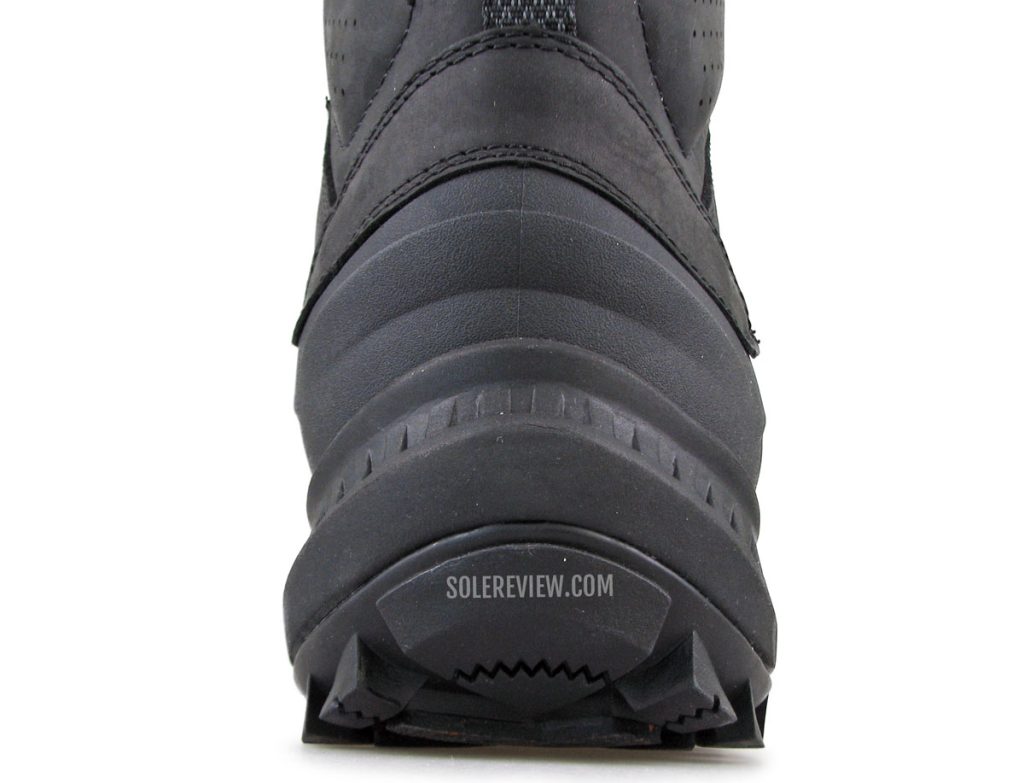
The Overlook 2 is fairly supportive, but a more conforming heel fit would have resulted in better stability.
Of course, a soft heel isn’t without its downsides. The foot doesn’t feel securely locked in at the base of the heel, and one wishes that the level of support could have been better. There’s also this sense of extra room around the base of the heel.
Otherwise, there’s no fit issue per se. There’s no heel slippage during hikes, and the Overlook 2’s insides are snug and comfortable.
Even with a 200 gram of insulation fill and a fleece lining, the interiors do not fit stuffy. However, wearing a thick pair of woollen socks may require buying a half size larger.
We haven’t tested the Overlook 2 in ultra-cold weather, but only up to -19 C ( – 2.2 F). With a thin pair of socks, there was a slight chill inside the toe-box.
We’re confident that the Thermo Overlook 2 can be used in -25 C ( – 13 F) without discomfort – as long as you keep moving, that is.
Merrell uses its proprietary M Select Warm fill instead of Thinsulate or Primaloft.
This is a common practice within the outdoor industry. Columbia uses Omni Heat, the North Face brand has Heat-Seeker, and Keen insulates its boots with Keen Warm.
We love that the entire lining is made of soft fleece, and that includes the toe-box, tongue flap, and heel collar. Not only does this treatment make the insides warm, but it also elevates interior comfort.
We recently reviewed the Keen Revel IV, and the latter lacked a fleece lining. The difference in comfort is a stark contrast, to say the least.
Most of the Thermo Overlook’s exterior is either leather or rubber, and is based on a duck boot construction – a form factor that was first introduced by LL Bean.
The lower half is made entirely of rubber, and this design is very effective at keeping the water and road salt out.
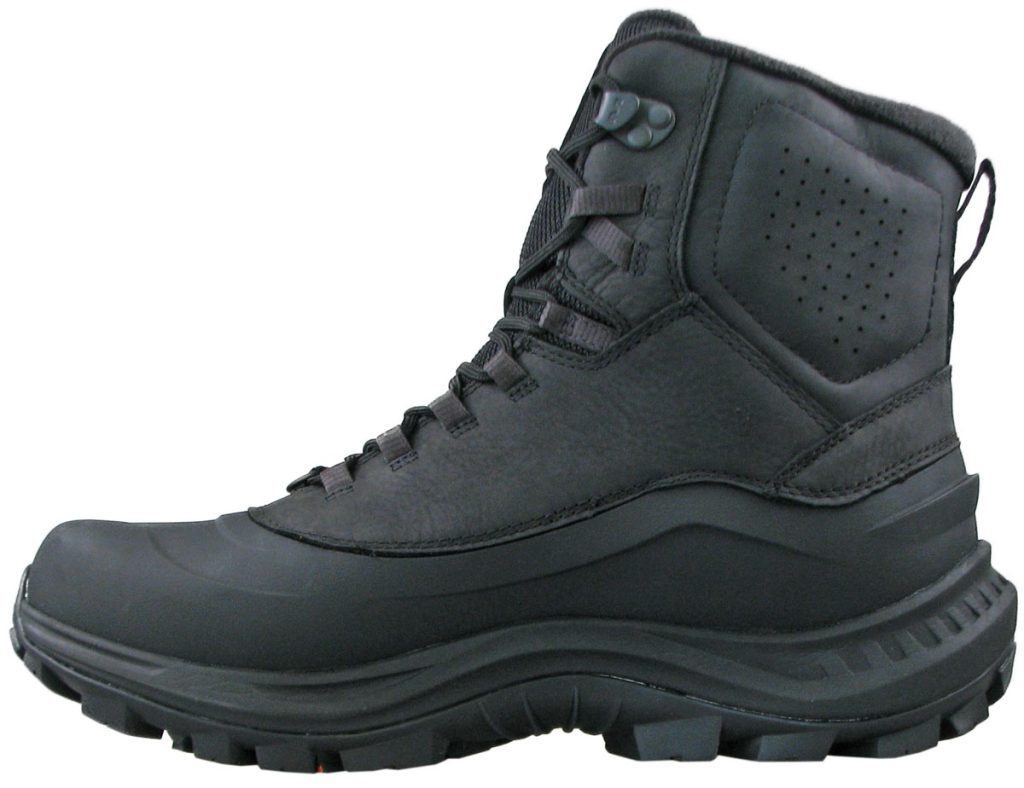
The Overlook 2’s upper is a modern spin on the Duckboot. The lower half is clad with rubber for waterproofing and protection against mud and slush.
The rubber half is also easy to clean and forms an insulating barrier against the cold.
The rubber has molded ridges on the heel to secure a snow shoe. Unless we’re talking about a thick rubber buckle, the ridged rubber heel allows the thin straps or bindings to lock in over the shoe.
The nubuck leather panels are soft and waterproof. Except for the top grommet, most of the lacing loops are nylon, so it’s very easy to cinch the upper. The thin laces glide smoothly over the mesh tongue.
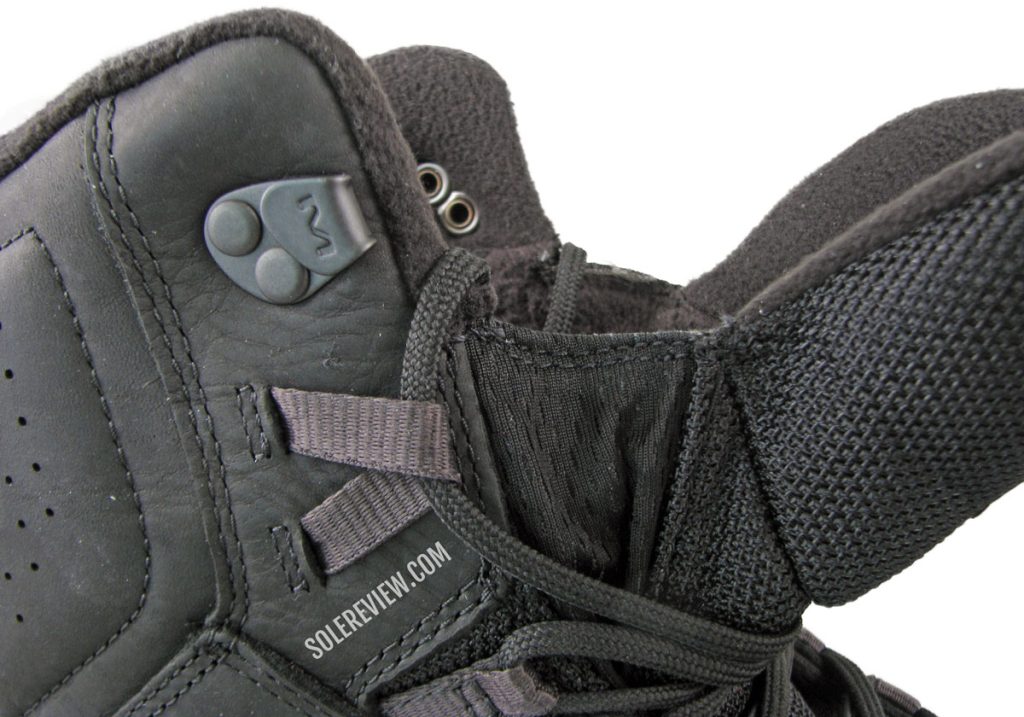
The tongue bellow/gusset is set very high, and this has a positive effect on the level of warmth and waterproofing.
One of the features that improve the Overlook 2’s waterproofing and insulation capabilities is the high tongue bellow. The tongue gusset attachment point is just below the top eyelet. That’s high as it gets.
Combining the Merrell Overlook with a waterproof gaiter or water-repellent pant will deliver the best waterproofing results. For this review, we wore the Eddie Bauer Guide pants. We reviewed this fleece-lined pants a few years ago, you can read all about it here.
PROS AND CONS
The Merrell Thermo Overlook 2 gets most things right. It’s reasonably priced for the level of equipment. It’s warm as advertised, comfortable, and waterproof. The duck-boot style rubber clading is easy to maintain after a messy hike.
Extras like a fleece interior make the insides extremely comfortable, and a high tongue bellow enhances the waterproofing and insulating properties of the upper. The midsole and insole offer sufficient comfort and arch support.
The Merrell Thermo Overlooks weighs less than 600 grams or 1 lb 5 ounces, so it’s well below the median weight for this category.
There are a couple of areas we’d pick on. The first is the sloppy fit at the base of the heel due to the absence of a supportive counter. The second concern is the Vibram Arctic Grip outsole. Even with the ‘wet ice’ claim, the outsole fares poorly on slippery (icy) surfaces. If that’s not false advertising, what is?
SHOES SIMILAR TO THE MERRELL THERMO OVERLOOK 2
If it isn’t already obvious from the tone of our review, the Overlook 2 is an excellent winter boot for the price.
However, the $30 less expensive Columbia Fairbanks Omni-Heat is also worth considering. It’s equally warm, waterproof, comfortable, and weighs less than the Overlook. That being said, it lacks the duck-boot rubber cladding and deep outsole lugs.
The North Face Chillkat IV is also comparable. Like the Overlook 2, it has a rubber lower half as well as 200 grams of ‘Heatseeker’ fill. Despite the similarities in the spec level, our choice would be the Merrell boot.
Lastly, there are a couple of models that feature similar outsoles as the Overlook. The Keen Revel IV and its Polar Traction outsole is comparable with the Vibram Arctic grip outsole. We reviewed the Revel recently, and it’s a mediocre winter boot at best. It’s also heavier and more expensive than the Merrell Overlook 2.
The second shoe is the Kodiak Taggish boot with an Arctic Grip outsole, but its high price and level of kit make it a weak value proposition.
Do you own this shoe? Improve this review by sharing your insights – submit a review here.

